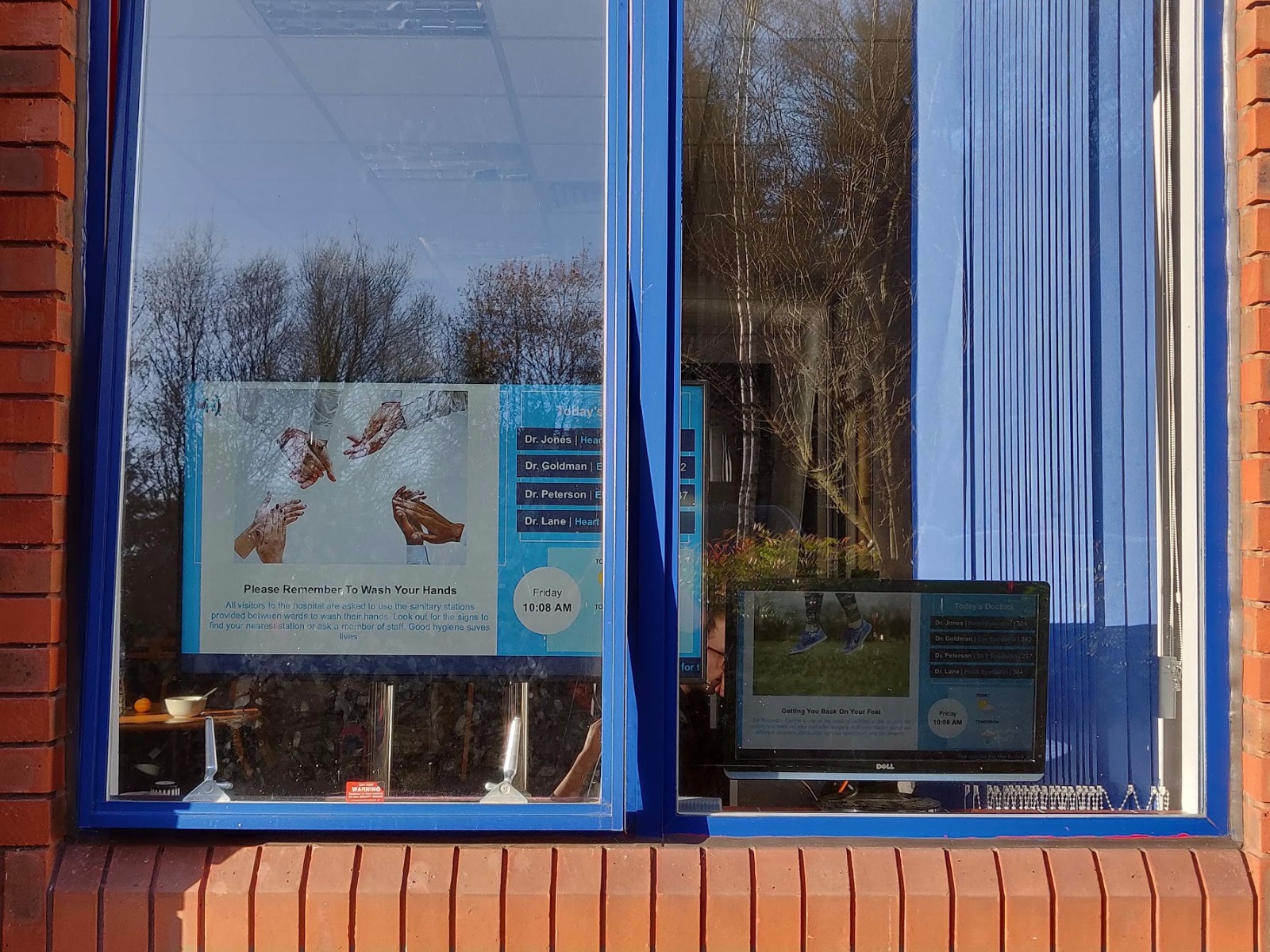Those wanting to capitalise on the benefits of digital signage will have to consider whether they require a high brightness screen.
Whether or not you need a high brightness screen is determined by a few factors, mainly the amount of direct sunlight your screen will receive and the distance it will be from the window.
Before we go through when a high brightness screen is required, it is important that we first establish what they are and the difference between them and a normal TV screen.
What is a high brightness screen?
A high brightness screen or high bright display is a digital display that has been specifically designed to function within bright areas, such as broad daylight. One of the main benefits of a high brightness display is a large reduction of glare from reflection or sunlight.
A normal TV exposed to this level of brightness would be near impossible to see, which would severely diminish the effectiveness of your digital signage content. A quick way to visualise this is to take a laptop outside and have the screen in direct sunlight. As you will see, the laptop screen will now act almost like a mirror due to the glare from the sunlight. The reason for a normal TV or laptop screen being unable to perform in this environment is down to its total candela or nits. Candela (cd/m²) is the unit used to measure the brightness of a source of light. Your household TV screen will measure between 200-300 cd/m², as it designed to be used indoors. A High brightness TV or screen will range from 1000-2500 cd/m², more than twice as bright as your regular TV screen. With this level of candela, the content being displayed is clearly visible so you can rest assured that passersby are able to see what is present on the screen.

When do I need a high brightness display?
Knowing when you need a high brightness digital display is dependent on a few factors.
The first is the aforementioned exposure to direct sunlight. If you’re wanting to have a digital screen in your street-facing window or looking to install and advertising screen for your shop window, you need to think about how many hours a day and the intensity in which the window receives sunlight. If the answer is not too many, for example with north-facing windows in the UK, you may get away with using a lower candela digital signage display. It’s important to note that, generally, you will not want to use a regular TV screen. This is because they are designed to only be on for a few hours of the day, any longer than this and they can burn out. As such, a screen designed specifically for digital signage will be required.
Should your window be exposed to more than a few hours of direct sunlight a day, then it will almost certainly require a high brightness display. If you want to install an advertising screen for a shop window you will want your content, advertisements, and messages to be visible. Therefore, it is highly important you source a bright enough digital advertising display to ensure you meet your marketing goals.
The second, perhaps less obvious factor to consider is how close the screen will be to your window. Ideally, you want as little space between your screen and your window, as this will minimise the amount of glare in front of the screen.
In order to do this, you may also have to include a screen stand or ceiling mount when installing your high brightness screen. Were you to have a larger gap between the screen and the window, it would have a similar result as using a lower candela screen, making the content displayed far less visible.
After doing some research, however, you may be surprised at the cost of these high brightness displays. Because this is still a relatively new technology, prices are still rather high, especially when compared to a regular TV of the same size. As we’ve already established though, a regular TV simply won’t provide you with the performance you need. We do, however, have a cheaper alternative that can be used in certain circumstances.
Semi-high brightness screens
An alternative we have been providing in appropriate locations are semi-high brightness screens. These screens put out around 700 cd/m² – hence the name semi-high brightness – but are far cheaper than a high bright display. In most instances, they are at least half the price.

Of course, you need to be wary that these screens are, ideally, to be used in windows that receive only partial sunlight throughout the day and so are not always a sufficient alternative. In some cases, you may get away with a couple hours of direct sunlight on the window but the effectiveness of the screen will be sub-optimal.
Whether it’s a high brightness or semi-high brightness screen you need, give us a call on 02380 981110 or click the button below for a free consultation with one of our screen specialists.
